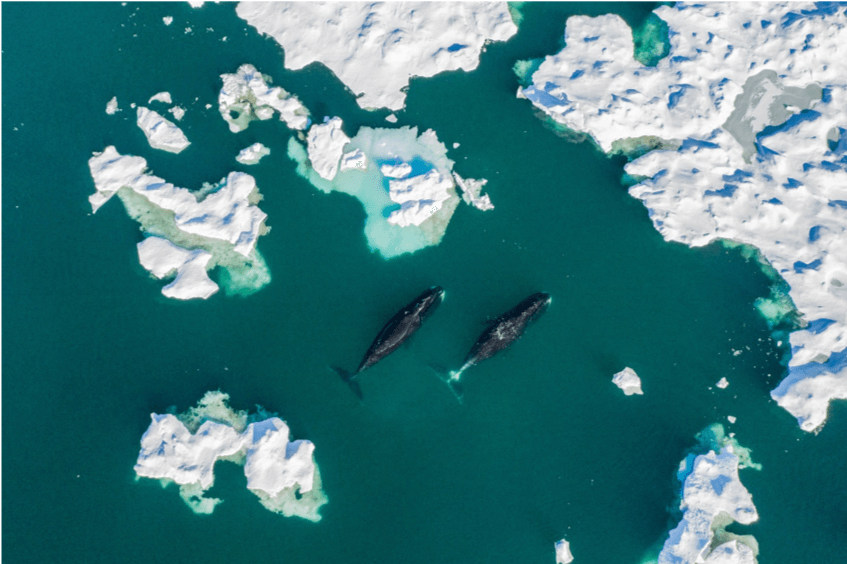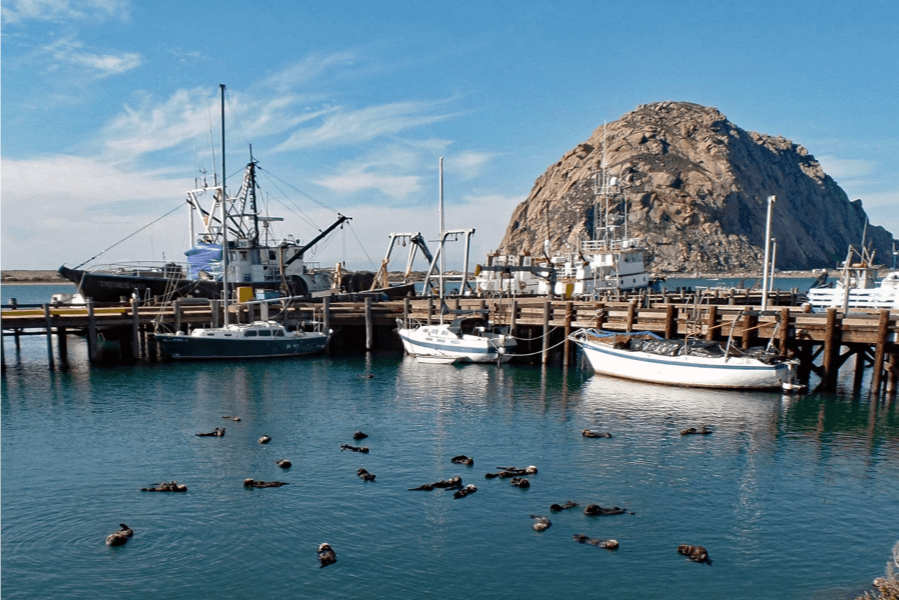From an emotional standpoint, the world of conservation can often be quite difficult to navigate. Through our own activities, the state of the Earth seems to be deteriorating at tremendous speed and irreversibly. This disturbing narrative can also be observed in the world of marine mammals. Some of these animals, the Steller’s sea cow for instance or, more recently, the Chinese river dolphin, have already become extinct. Others, such as the vaquita and the North Atlantic right whale, could join this list if current trends continue.
However, it is important to qualify this surge of pessimism, because, although there is no doubt that a number of marine mammal species are threatened, several others have bounced back remarkably in recent decades. It is therefore interesting to take a closer look at some of these positive stories since, in addition to filling us with hope, they are also likely to inspire us to deal with those species whose plight is less rosy.
Improbable post-whaling stories
Unexpectedly, however, the paths of many of these giants took a very different turn. The scarcity of cetaceans of commercial interest, the emergence of alternatives to whale oil, public discontent fuelled by high-profile law suits by environmental groups, the adoption of legislation to protect these animals and, ultimately, the 1986 moratorium established by the International Whaling Commission are all elements that led to the collapse of this industry. In this new environment mostly devoid of human predation, several species, despite being severely decimated, were able to begin a slow rebound.
Amongst them, the bowhead whale has achieved the noteworthy feat of increasing from fewer than 3,000 individuals in the 1920s to a global population that surpassed 25,000 heads in 2018. A rather incredible story that is not exclusive to these cetaceans of the Arctic, but shared with other species, each of which continues to heal, at its own pace, the deep wounds inflicted by intensive whaling.
Miracle on the beaches of the Pacific
Beyond cetaceans, large-scale commercial hunting has also affected a number of other marine mammal species. Such is the case of northern elephant seals, which were hunted for their oil throughout the 19th century. This pressure was so intense that, from the once seemingly endless colonies, by the latter part of the century, these seals were nowhere to be found. The species became so rare that it was finally declared extinct in 1884. However, the following decade, a small group of survivors consisting of about 100 individuals was found in Mexican waters. Despite this discovery, the species teetered on the brink of extinction.
A century later, this fateful moment in the history of northern elephant seals is difficult to fathom for anyone visiting the west coast of North America. Indeed, these shores now teem with enormous colonies of these seals that come to bask in the sun. A recovery made possible by the cessation of commercial hunting as well as the various protective measures put in place by the Mexican and US governments. This narrative, which is shared by several other species of pinnipeds, underscores once again one of the most encouraging facets of life: resilience. Indeed, when suitable conditions return, resilience enables species to make sometimes astonishing comebacks, like the northern elephant seal, which went from a meagre handful of individuals to a progeny now numbering in excess of 200,000.
Sirenians
Like cetaceans and pinnipeds, sirenians – aquatic cousins of elephants – also face multiple dangers caused by human activities. Even if hunting is a threat, it is neither the only one nor the most significant. The four existing species of sirenians, i.e. three species of manatees and the dugong, face multiple risks: ship strikes, fisheries, the presence of pollutants in their habitats, etc. For these reasons, they are all listed as vulnerable by the International Union for Conservation of Nature, and most if not all of them are believed to be in decline. This worrying situation seems to leave little room for optimism.
But there is always hope, even for sirenians. Despite all the challenges they have to contend with, there is encouraging news for the Florida manatee, one of the two subspecies of the West Indian manatee. Classified as endangered in 1973, it wasn’t until nearly two decades later (1991) that the first aerial surveys confirmed the precariousness of the manatee’s situation when the population of the whole of Florida was estimated at just over 1,200 individuals. If the situation was alarming at the time, it is not so much of a concern today. In 2018, the population numbered around 8,810 animals. This rapid turn of events is due to the implementation of restrictions for watercraft and waterfront real estate development as well as habitat protection and restoration efforts. Several other measures have allowed manatees to gradually resume their mythical presence along the coasts and in the rivers of Florida.
.
Moral of the story
In today’s world, there is no doubt that a number of marine mammal species are suffering from the impact that human activities are having on the environment. Above all, we mustn’t let the bad news drown out the success stories that are written over the years through the efforts of countless individuals. Beyond the three narratives briefly presented in this article, there are many others relating to grey whales, sea otters, New Zealand fur seals or humpback whales, just to mention a few. Although the details of each of these stories may vary, the moral remains largely the same: Even if human activities can quickly wreck havoc on certain species, our actions are equally capable of restoring the conditions in which these same animals can heal and ultimately flourish, even when the situation initially seems utterly hopeless.
Find out more
(2005) The History of Whaling and the International Whaling Commission (IWC). (Suisse) Fonds mondial pour la nature.
(2015) Hückstädt, L. Mirounga angustirostris, Northern Elephant Seal. (Royaume-Uni) The IUCN Red List of Threatened Species: 1 – 13.
(2015) Webber, M. A., Jefferson, T. A. et Pitman, R. Extinct species. (États-Unis) Marine mammals of the world 2ndedition.
(2016) Mathis, V. Florida manatee. (États-Unis) Florida Museum of Natural History.
(2017) Bonde, R. K. et Flint, M. Human interactions with sirenians (Manatees and Dugongs). (Royaume-Uni) Marine Mammal Welfare: 299 – 314.
(2018) Cook, J. G. et Reeves, R. Balaena mysticetus, Bowhead Whale. (Royaume-Uni) The IUCN Red List of Threatened Species: 1 – 16.
(2018) Davis, J. Steller’s sea cow: the first historical extinction of a marine mammal at human hand. (Royaume-Uni) Natural History Museum.
(2018) Miller, M. L. Northern Elephant Seals: A Dramatic Conservation Success. (États-Unis) The Nature Conservancy.
(2019) Pavid, K. Elephant seals: a giant survival story. (Royaume-Uni) Natural History Museum.
(2022) Florida manatee. (États-Unis) Marine Mammal Commission.
(2022) Thornton, S. et Marrero, M. E. Big Fish: A Brief History of Whaling. (États-Unis) National Geographic.
(2023) Bowhead whale. (États-Unis) National Oceanic and Atmospheric Administration Fisheries.
(2023) Rose, P. Manatees rebound in revitalized Florida river after years of dangerous decline. (États-Unis) ABC News.









